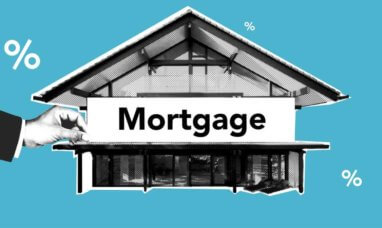Refinancing can be a great way to save money by reducing your mortgage interest rate. A growing number of homeowners are taking advantage of today’s historically low refinance rates.
Are you looking to refinance but don’t have the funds to pay the large upfront fees? You don’t have to let a lack of funds keep you from getting a lower interest rate. A no-closing-cost refinance is a great option that doesn’t require you to bring money to the table. This type of refinance is especially beneficial if you plan to move within the next few years.
Here’s what you need to know about a no-closing-cost refinance to decide if it’s the best option for you.
The Ins and Outs of a No-Closing-Cost Refinance
When refinancing your loan, closing fees can cost anywhere from 2% to 5% of the principal balance. Traditionally, homeowners are expected to bring these funds to the table when refinancing.
The fees that make up closing costs include:
-
-
- Application fees
- Underwriting fees
- Title search fees
- Appraisal fees
- Recording fees
-
Unless you have a small principal balance, your closing costs will likely total a couple thousand dollars. What if you simply don’t have these funds? This is where a no-closing-cost refinance comes into the picture.
Many lenders offer no-closing-cost mortgages for qualified homeowners. With this type of loan, you don’t have to pay the closing costs upfront. This eliminates the stress of figuring out how to come up with thousands of dollars at once.
There are two ways that a no-closing-cost refinance can work:
-
-
- Some lenders choose to roll the upfront fees into the total principal balance that you owe. This will increase the loan amount that you take out. For example, let’s say you owe $400,000 on a home and your closing costs are 3% or $12,000. Instead of refinancing $400,000, your total loan value will become $412,000.
- Other lenders will simply waive the closing costs but increase the interest rate on the loan. This allows the lender to recoup some of the closing costs over the life of the loan.
-
In either scenario, you’ll end up with a higher monthly payment than if you had paid the closing costs upfront. Do the math and be sure that your new payment still saves you money. You don’t want to refinance only to be left saving very little each month, or even worse, paying more.
Be aware that the longer you’re in the home, the more you’ll pay. If you get a 30-year or 15-year refinance with no closing costs and plan to retain your home for the duration of the mortgage, even a slight increase in interest rates will add up in the end.
You may eventually pay more in added interest than the upfront closing costs were worth. If this is the case, or if you end up with a higher interest rate than you started with, a no-closing-cost refinance doesn’t offer any benefit.
A no-closing-cost refinance is best if you plan to move within the next few years.
Pros and Cons of a No-Closing-Cost Refinance
As with any kind of loan, there are pros and cons to choosing a n0-closing-cost refi. Here are some of the benefits and drawbacks that you’ll want to be aware of before deciding if this is the best refinancing option.
Pros
-
-
- No fees paid at closing
- Shorter break-even point
- Enables all homeowners to refi, even if lacking cash
-
Cons
-
-
- Higher monthly payment
- You may pay more over the life of the loan
-
When a No-Closing-Cost Refinance Makes the Most Sense
There are several scenarios in which a no-closing-cost refinance makes sense. For example, if you need to refinance your home but simply don’t have the funds to pay for upfront fees, this type of refinancing is likely your only option.
Likewise, if you’re hoping to move into another house soon, a no-closing-cost refinance could be a good choice. If this house isn’t your forever home and the plan is to move in the next few years, hold onto your cash. Within this short time frame, you won’t pay a huge amount in interest, so choosing the no-closing cost option is a good financial decision.
Be aware that not all lenders offer no-closing-cost refinancing. You’ll want to shop around to find a lender that offers this type of loan.
You’re most likely to find a no closing cost refinance at a credit union or local bank. Even on an FMERRs or HIRO loan, which are programs that replace HARP, a no closing costs refinance may be an option.
The Pitfalls of a No-Closing-Cost Refinance
On the surface, not having to spend thousands of dollars upfront for a lower interest rate is appealing. However, it’s important to look at the big picture. Think about your future housing situation and ensure that this type of refinancing makes the most sense.
If the home you’re living in is your forever home, it’s better to pay the closing costs upfront. Otherwise, the amount of money you pay towards interest each month will likely add up to be more than the original closing cost amount.
Additionally, some lenders add a prepayment penalty to no-closing-cost loans to discourage borrowers from financing again before upfront expenses have been recouped. Be sure to read the fine print and be aware of any additional interest or fees that you’ll have to pay with a no-closing-cost refinance.
What Do the Numbers Look Like?
Before deciding that a no-closing-cost mortgage makes the most sense, ask your lender to provide an estimate of the closing costs. You’ll also want to compare the difference in interest rates and monthly payments for a no-closing-cost loan versus a loan with upfront fees.
When applying, your lender should give you an official loan estimate, which details the terms and costs for the loan that you choose.
In finalizing your decision, calculate the break-even point. This is the amount of time it will take for the added costs of a no-closing-cost loan to equal the closing costs that you avoided through the loan. Then compare that to the amount of time that you plan to live in your home.
Featured Image: Twenty20






